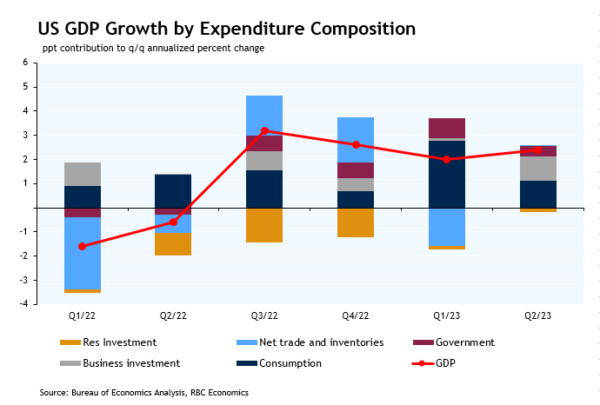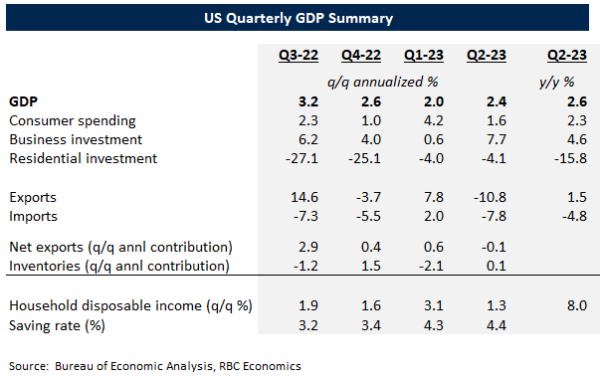Q2 U.S. GDP came in at 2.4% (annualized rate), up from a 2% growth in the prior quarter. Much of that growth was driven by consumer spending, and non-residential investment.
Consumer spending growth slowed, but was still firm at 1.6% with spending on goods little changed but spending on services rising solidly (2.1%).
Non-residential investment surged 7.7% in Q2, with investment on equipment being the largest contributor, which grew 10.8% after two consecutive declines.
Residential investment fell by -4.1%, consistent with another tick lower in existing home sales in Q2. Residential investment likely will rise for the first time in ten quarters in Q3 with signs that housing markets may be past their bottom.
Household disposable incomes jumped another 5.2% in Q2 reflecting still-resilient labour markets and firm wage growth. The household savings rate also edged higher (+0.1%), suggesting that household purchasing power is still strong.
Bottom line: GDP growth continued to climb in Q2, and the economy has been persistently more resilient than expected despite surging interest rates. Labour markets are still very strong, but Fed Chair Powell highlighted lower job vacancies and slower wage growth as signs of slowing under the surface. And inflation pressures have eased substantially in recent months. We expect labour markets to soften over the second half of the year and for slower inflation to be sustained – there are two more employment reports and two CPI reports before the Fed’s next policy decision. Contingent on that, we do not expect additional interest rate hikes from the Fed, although policymakers also won’t hesitate to hike interest rates further if inflation were to reaccelerate.














